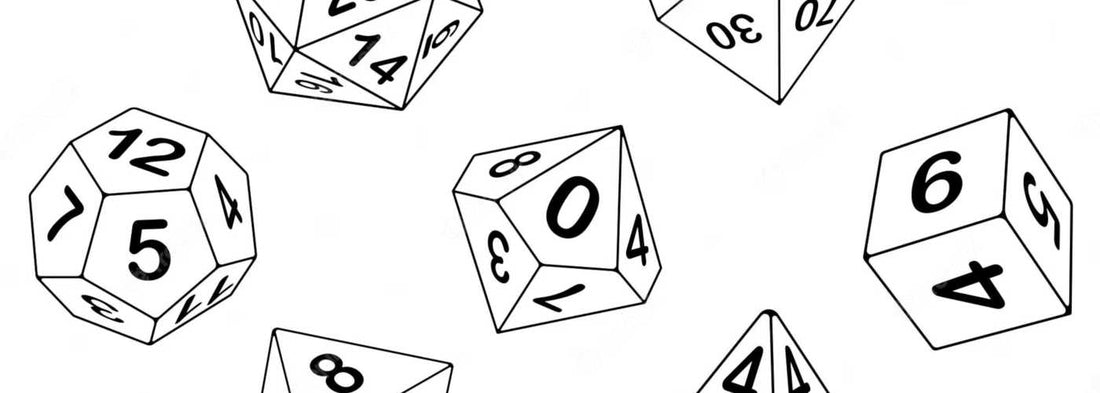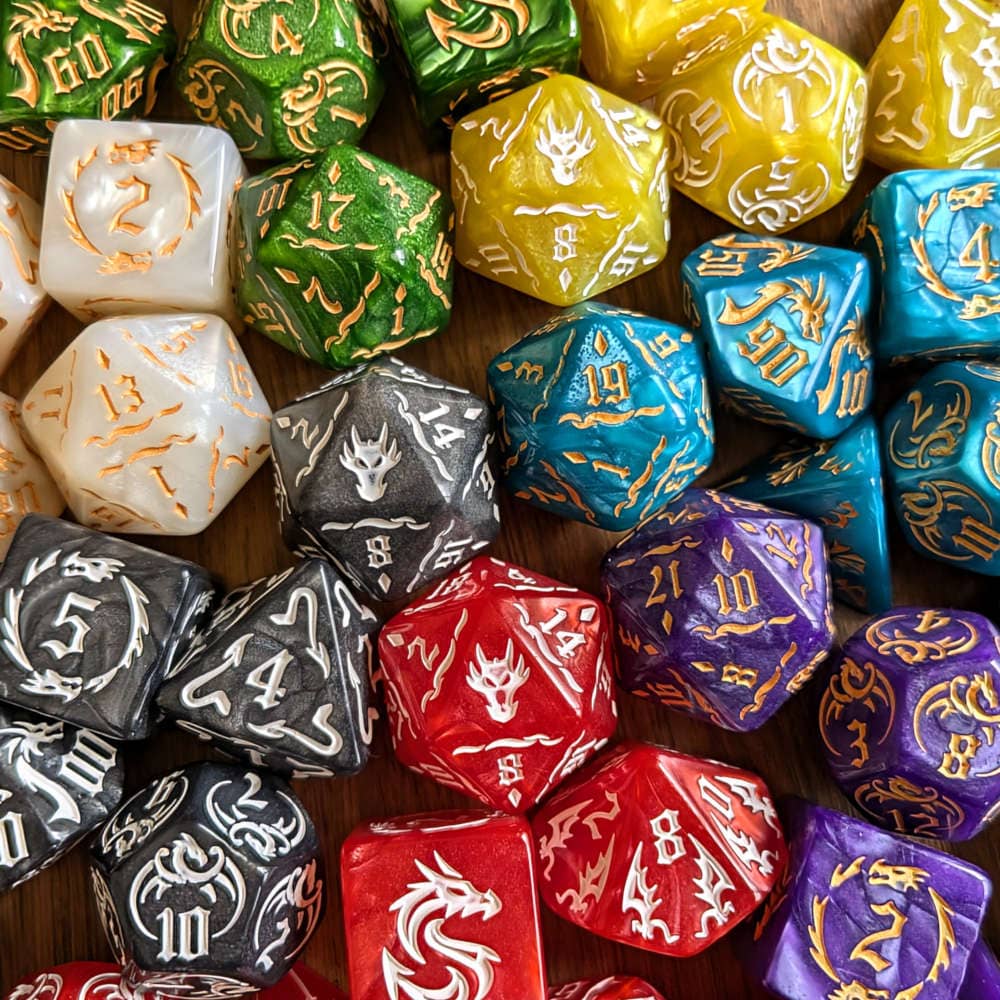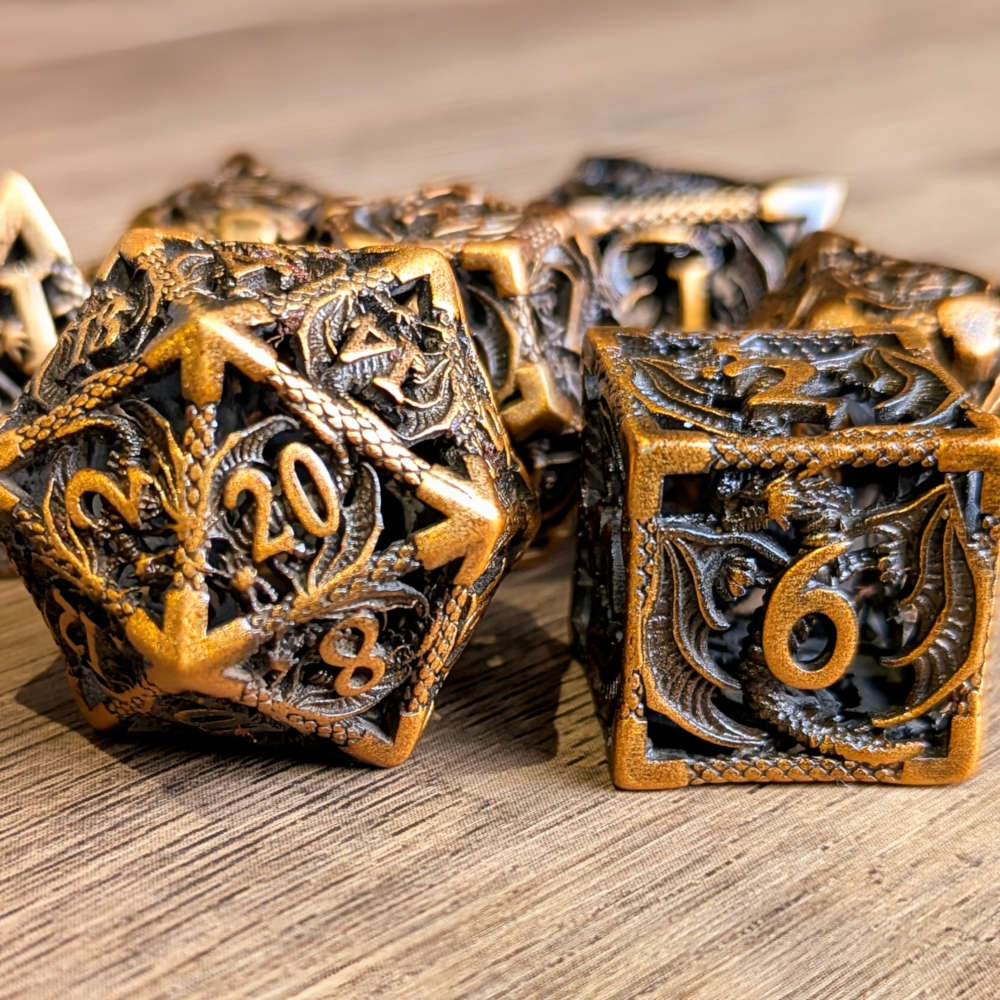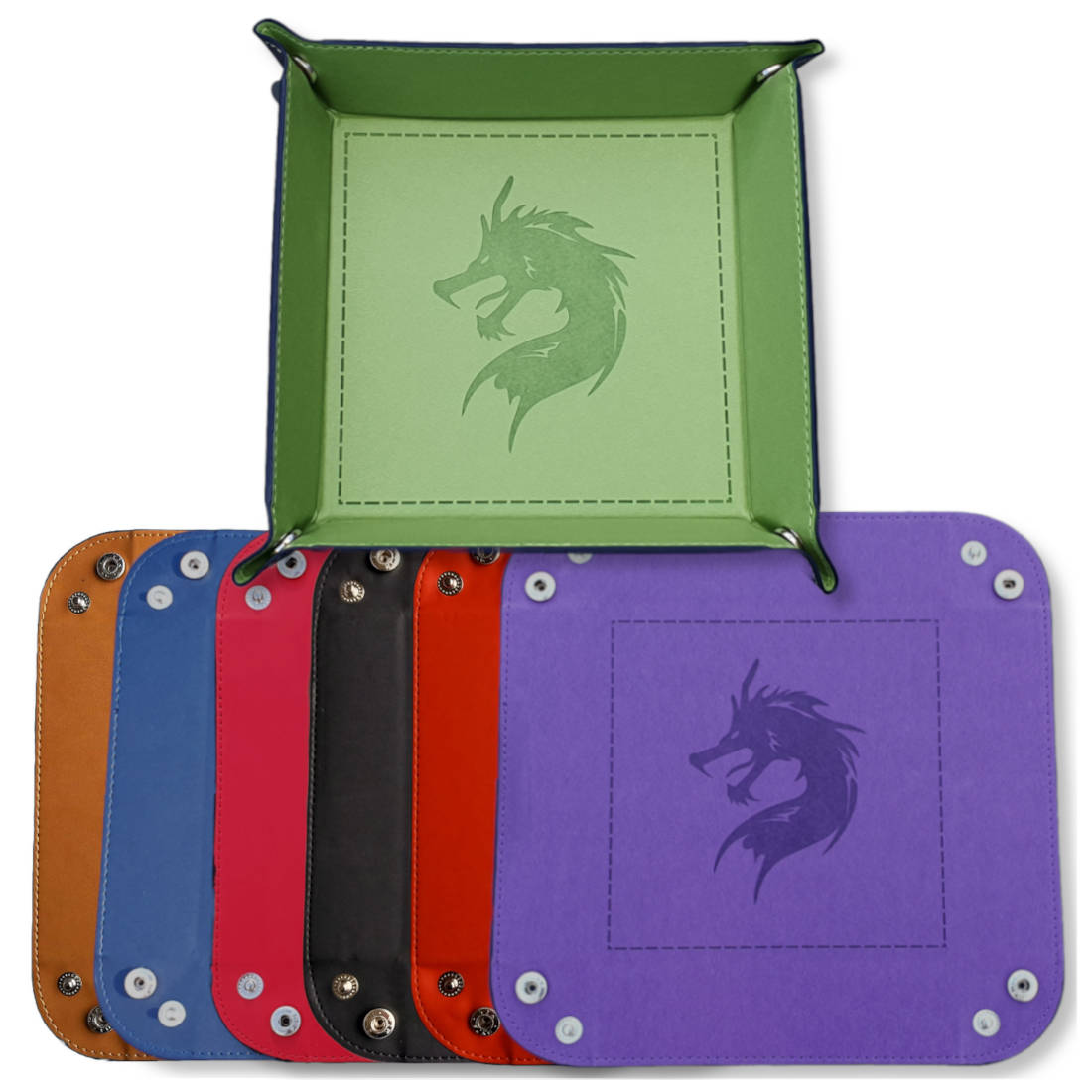D&D dice explained

Dungeons and Dragons (D&D) is a game of imagination, where players embark on epic adventures across fantasy worlds. But before your adventure can begin, you need to make sure you have the right dice to play.
In this guide, we will delve into the 7 dice required to play D&D, and explain what each of them does, so that you understand how many dice you need for D&D!
How do D&D dice rolls work?
In D&D, dice rolls are central to resolving various actions, especially in combat. From attacks to spells and healing, each roll involves throwing dice and adding any relevant modifiers or bonuses. Whether facing foes or casting spells, the roll's result often decides success or failure.
How many sides are there on D&D dice?
There are 7 dice in a standard D&D dice set, each with a different number of sides: d4 (four-sided), d6 (six-sided), d8 (eight-sided), d10 (ten-sided), d12 (twelve-sided), d20 (twenty-sided), and d100 or percentile die (ten-sided, numbered 00 to 90 in increments of 10).
D&D dice shape names
The shapes of D&D dice include the tetrahedron (D4), hexahedron (D6), octahedron (D8), pentagonal trapezohedron (D10), dodecahedron (D12), and icosahedron (D20). These shapes are collectively referred to as polyhedral, meaning objects with many sides and three-dimensional characteristics.
D&D dice and their uses
There are 7 different dice used in D&D, each with their own purpose. Some dice are used more frequently than others, but all of them play an important role in D&D, so you should understand what each of them does.
How many dice you'll need depends on if you're a player or a Dungeon Master (DM). Explore our guide that outlines what dice you need for D&D. Or, if you're a DM, you'll likely need more than just one set of dice. Check out our guide that explains how many dice a DM should have.
To start playing D&D, you need one of each of the following dice: D4, D6, D8, D10, D%, D12, and D20. Most dice sets come in sets of 7, with one of each of these dice.
D20: twenty-sided die

The D20, or the icosahedron, is a twenty-side die. Why does DND use a d20, you might ask? Well, it is used for a wide range of dice rolls. It is most notably used for attack rolls, ability checks, and saving throws.
As the most used die in D&D, it's the die that players hold their breath for, hoping to see that natural 20 come up when it counts most. Whether that’s in combat when you’re rolling to make a critical hit, or at the start of combat when rolling initiative.
D6: six-sided die

The D6 is a cube-shaped die, also called a hexahedron, with six numbered sides. Its uses in D&D include rolling for character stats during character creation, and determining the damage dealt by some small weapons.
It's also used to calculate sneak attack damage, and a wide range of spells such as Disintegrate.
D10: ten-sided die

The D10 is a pentagonal trapezohedron. In other words, it’s a die with ten numbered sides going from 1 to 10. It is often used along with a percentile die to roll a D100.
Additionally, a d10 is used to roll for hit points when levelling up a Fighter, Paladin, or Ranger. A few spells, such as Fire Bolt, need a d10 roll to calculate damage.
D8: eight-sided die

The D8, or octahedron, is an eight-sided die with triangular faces. It is frequently used to determine damage dealt by larger weapons such as a Battleaxe.
It is also used to roll hit die for many classes including Bard, Rogue, and Monk.
D12: twelve-sided die

The D12 is a dodechaderon-shaped die with twelve numbered sides.
It is one of the less commonly used dice in D&D, mainly for rolling damage with heavy weapons like the Greataxe.
D4: four-sided die

The tetrahedron-shaped die is used for damage dealt by many spells, and by some small weapons like the Dagger. It is the smallest die among the 7 used in D&D, with four faces offering an outcome between 1 and 4.
There are two different designs for D4 dice, so make sure you understand how to read a d4 correctly.
D%: percentile die

The percentile die, sometimes called a d100, is actually a ten-sided die. Instead of showing 1-10 like the D10 does, the percentile die shows 00-90. This is because it is used in combination with the D10 to make a d100 roll.
Rolling a d100 isn't too common in D&D, and it'll mostly be used by the Dungeon Master (DM) to roll on random loot and encounter tables.
Why are there 2 D10s?
The two D10s, often referred to as ‘percentile dice’, serve to generate numbers from 1 to 100. One D10 represents the tens digit, while the other represents the ones digit. This allows for the rolling of numbers ranging from 1 to 100, commonly used for determining random outcomes with finer granularity.
Which die is the most used in D&D?
The most used die in D&D is the d20, or twenty-sided die. It's versatile, used for ability checks, saving throws, and attack rolls, making it an essential tool for resolving various actions and determining outcomes in the game.
Dice sets to help on your next adventure
Now that you know which dice you need to play D&D, let us help you prepare for your new adventure. Explore our guide to the different materials used for D&D dice. Additionally, learn more about ways to organise your D&D dice sets.
As you embark on your next adventure, ensure you’re well prepared with our diverse range of DND dice sets. Your dice are your trusty companions in the world of tabletop gaming, so browse our collection and find the perfect set for your quests. Consider adding our glow in the dark D&D dice to your arsenal for an extra touch of magic during your gaming sessions!





